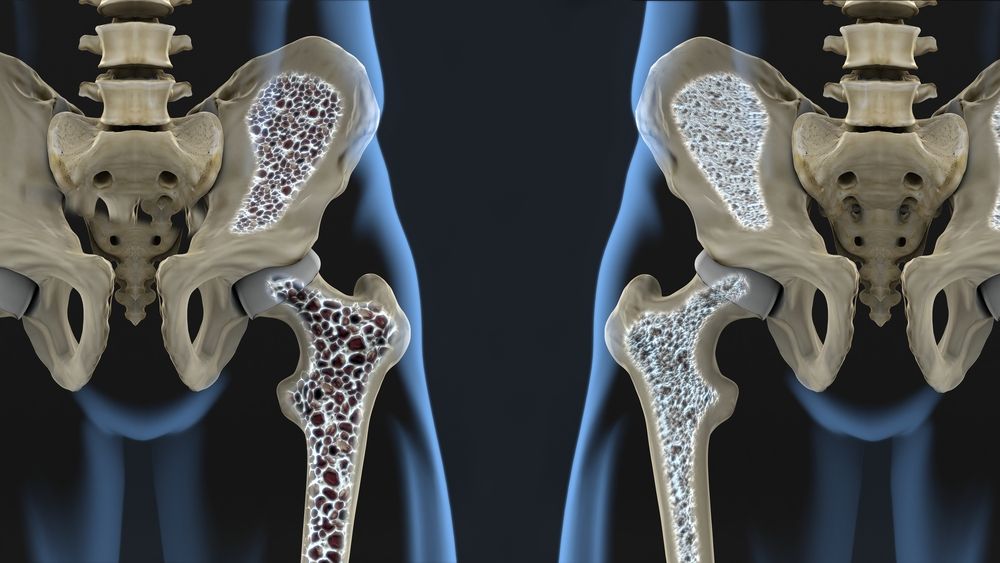AI Outperforms Radiologists in Detecting Fractures in Patients At-Risk for Osteoporosis
XRAIT tool finds more broken bones than X-Rays or CT scans of this population.

An artificial intelligence tool trained to pinpoint patients with broken bones who are also at risk for osteoporosis outperforms radiologists who manually read the reports, a new study has found.
Research, presented during ENDO 2020 and scheduled for publication in the Journal of the Endocrine Society, revealed a new AI-driven search tool, called X-Ray Artificial Intelligence Tool (XRAIT), finds five times the number of broken bones on X-Ray or CT scans than a radiologist can find by reading the reports.
Currently, 44 million Americans, most of whom are women, are at-risk for developing osteoporosis, and they’re also at heightened risk for fractures due to low bone mass. However, according to the National Osteoporosis Foundation, only 2 in 10 older women in the United States who break a bone are screened or treated for osteoporosis. And, for those at-risk patients who are identified, manual radiology report reads can still miss patients or distinguish them too slowly.
Results from a multi-institution study could have a positive effect on the clinical impact of osteoporosis, according to study authors.
“With XRAIT, limited healthcare resources can be optimized to manage the patients identified as at risk rather than used on the identification process itself,” said study co-investigator Jacqueline Center, MBBS, Ph.D., head of the Clinical Studies and Epidemiology Lab at Garvan Institute of Medical Research in Sydney, Australia. “By improving identification of patients needing osteoporosis treatment or prevention, XRAIT may help reduce the risk of a second fracture and the overall burden of illness and death from osteoporosis.”
The team, led by senior author Christopher White, MBBS, Ph.D., of Prince of Wales Hospital in Randwick, Australia, tested XRAIT’s efficacy in pinpointing patients by searching 5,089 digital radiology reports from patients over age 50 who visited the emergency room for bone imaging within a three-month period. A comparison with radiologist performance revealed XRAIT pinpointed three times the fractures, identifying 349 people with breaks likely due to low-bone mass versus the 98 found by radiologists.
The researchers also tested XRAIT on digitized radiology reports from a group of older patients – over age 60 – who are enrolled in the Dubbo Osteoporosis Epidemiology Study. Based on an evaluation of 327 reports of confirmed fractures and non-fractures, XRAIT accurately detected fractures nearly 7 out of 10 times and correctly identified patients without breaks 9 out of 10 times, Center said.
This high rate of accuracy, she said, indicates that hospitals will likely be able to use this AI tool to easily identify these patients and, potentially, help them avoid subsequent fractures.
GE HealthCare Debuts AI-Powered Cardiac CT Device at ACC Conference
April 1st 2025Featuring enhanced low-dose image quality with motion-free images, the Revolution Vibe CT system reportedly facilitates improved diagnostic clarity for patients with conditions ranging from in-stent restenosis to atrial fibrillation.
New AI-Enabled Portable Ultrasound May Facilitate 50 Percent Reduction in Cardiac Imaging Scan Time
March 28th 2025Artificial intelligence (AI)-powered measurement capabilities provide key features with the Compact Ultrasound 5500CV device, which was unveiled at the American College of Cardiology (ACC) conference.
Predicting Diabetes on CT Scans: What New Research Reveals with Pancreatic Imaging Biomarkers
March 25th 2025Attenuation-based biomarkers on computed tomography (CT) scans demonstrated a 93 percent interclass correlation coefficient (ICC) agreement across three pancreatic segmentation algorithms for predicting diabetes, according to a study involving over 9,700 patients.